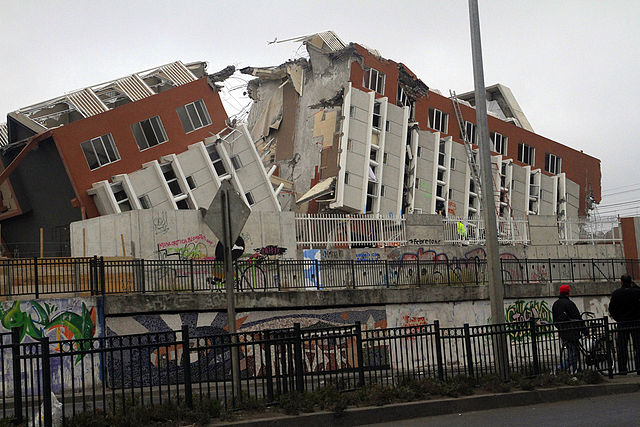Massive earthquakes and tsunamis aren’t isolated debacles that occur once in a blue moon. Less than five years after the Fukushima disaster, an earthquake of comparable degree has struck the coast of Chile.
An estimated 13 people are dead and one million people evacuated because of the massive 8.3 earthquake. The quake sparked a massive 15-foot tsunami that blasted parts of the Chilean coast.(1, 2)
The quakes epicenter was about 54 kilometers, or 34 miles, west of Illapel, Chile’s largest city. The quake had a depth of 33 kilometers, or 20.5 miles. It occurred late in the evening during rush hour, causing traffic to accumulate as people scattered across the streets.(3)
Darkness and destruction blankets Chile
Approximately 12 aftershocks of magnitude 4.9 or higher shocked residents trapped by the quake less than two hours after the first tremor. Even New Zealand, which is positioned 6,000 miles away from the quake’s epicenter, took precautionary measures against possible tsunami waves.(3)
The tsunami rippled across the Pacific Ocean toward French Polynesia and Tahiti. Tsunami waves up to 1.1 feet were seen at the French Polynesian island of Mangareva, which is located 3,900 miles west of Lima, Peru. Other waves measured 4.5 feet at Nuku Hiva, an island located about 1,000 miles north-northwest of Rikitea.(4)
The U.S. National Oceanic and Atmospheric Administration’s Pacific Tsunami Warning Center issued a tsunami advisory for Hawaii and Southern California, with swimmers and boaters being encouraged to stay away from the water until the threat subsided. No official evacuations were issued for L.A. County or other coastal areas in California.(4)
The earthquake was so strong that its power could be felt across South America. The strongest tremble was felt in Coquimbo and La Serena, Chile. The ground motions registered at a level 8 on the 12-point Mercalli scale, which is classified as “severe” for its ability to cause serious damage to infrastructure.(4)
The quake shook more than just the ground. Widespread power outages engulfed areas near the epicenter. Some regions report total collapse of their phone networks. Landslides were reported in Salamancas, Coquimbo and Los Vilos, which are located in the Chilean region closest to the quake epicenter.(4)
Power outages caused darkness to blanket over the city of Illapel. Multiple homes buckled under their foundation, forcing many residents to sleep outside.
Ring of Fire
Chile has a long history with earthquakes. The country is one of the most earthquake-prone regions in the world. It sits along the infamous Ring of Fire, which is an area where tectonic plates are constantly crashing into each other. Approximately 90 percent of the world’s earthquakes occur along the Ring of Fire.(5)
The last major quake to strike Chile occurred in 2010. A magnitude 8.8 earthquake launched a tsunami along the coast of Chile, claiming the lives of roughly 500 people, and swallowing 220,000 homes in the process. The strongest earthquake ever recorded on the planet occurred in Chile in 1960, when a magnitude 9.6 tremor claimed the lives of nearly 5,000 people.(4)
The 8.3 earthquake along Chile’s coast is the strongest earthquake to rock the world this year.
Sources include:
(1) BBC.com
(2) SkyNews.com.au
(3) CNN.com
(4) Weather.com
(5) CrystaLinks.com
